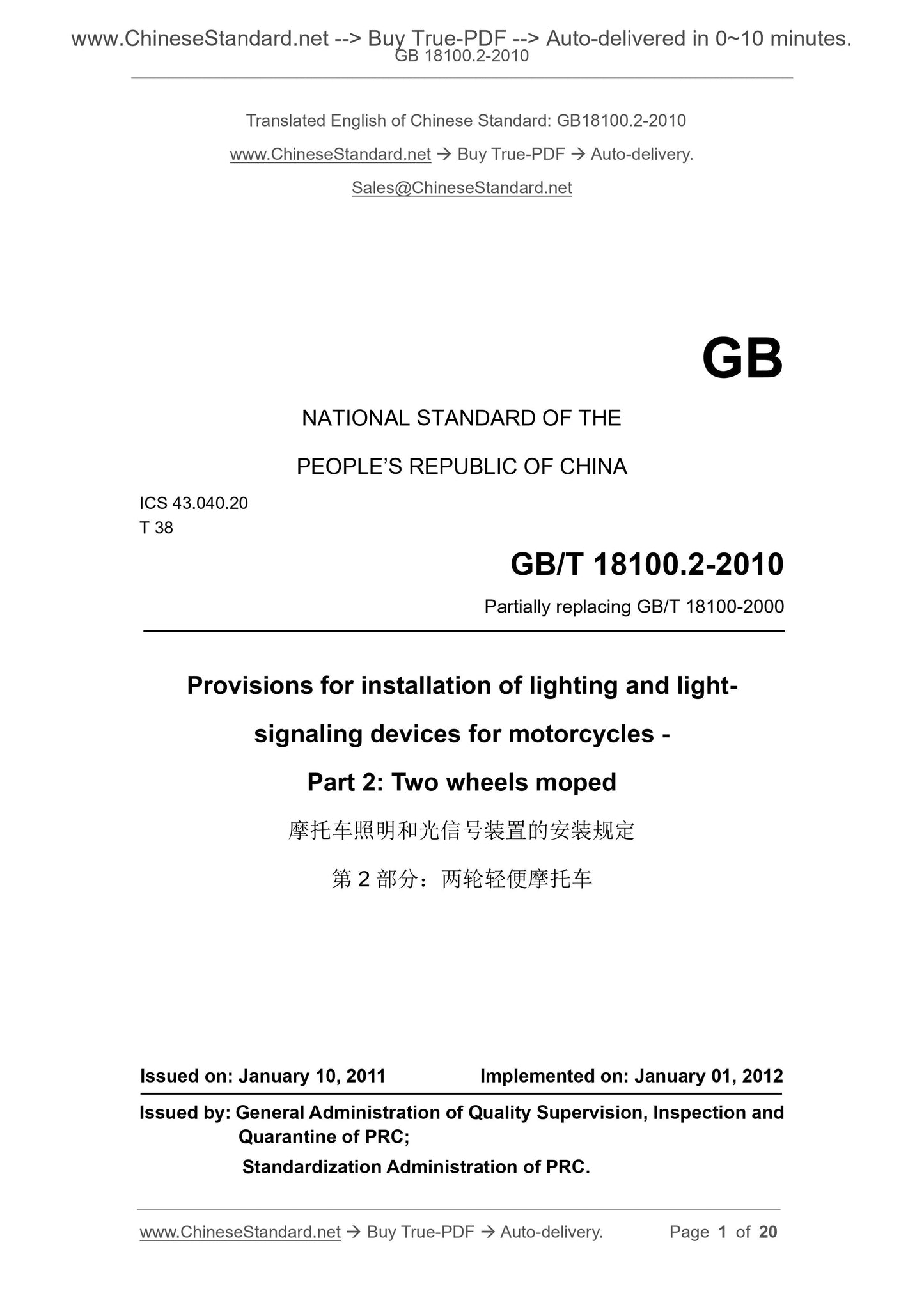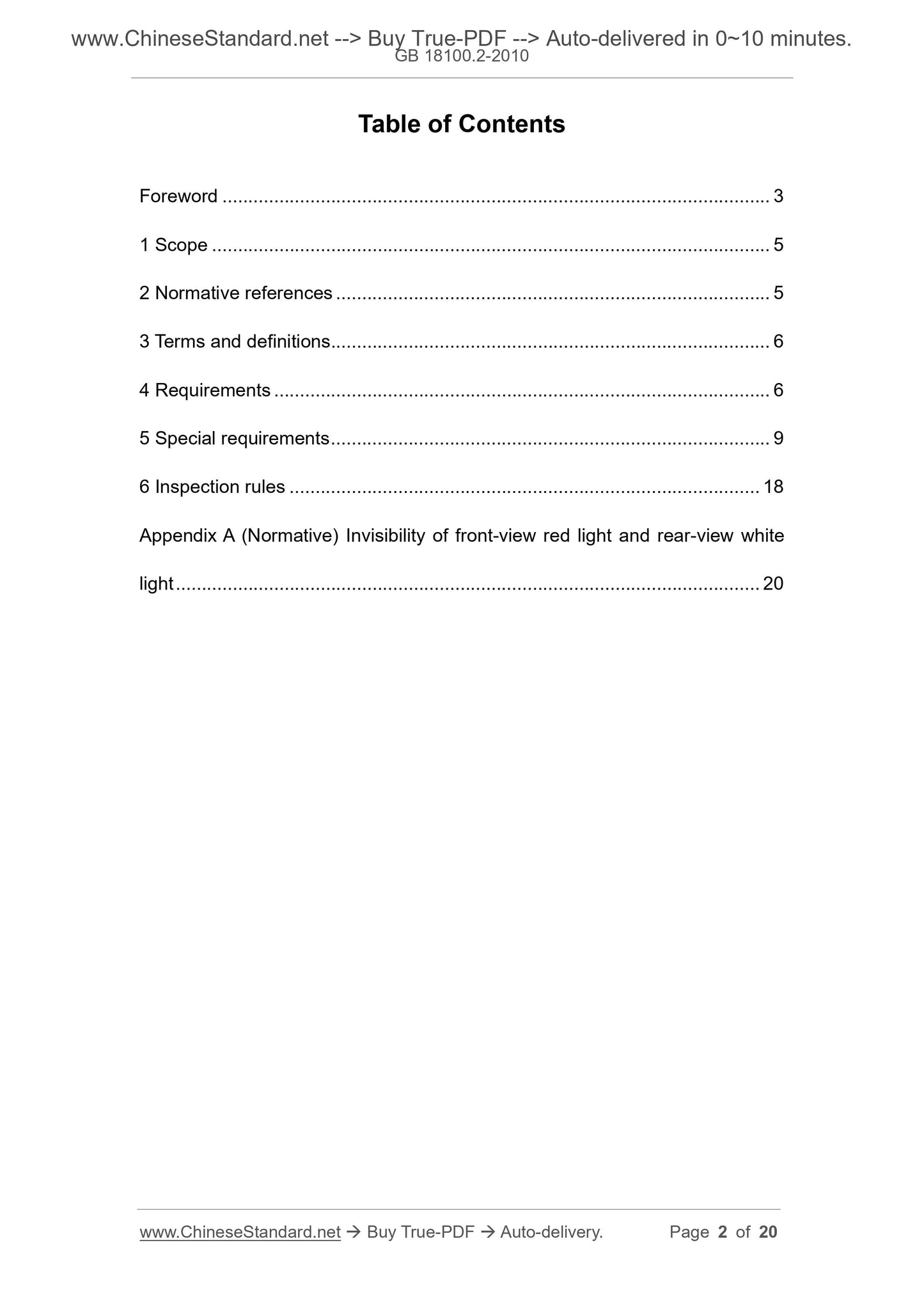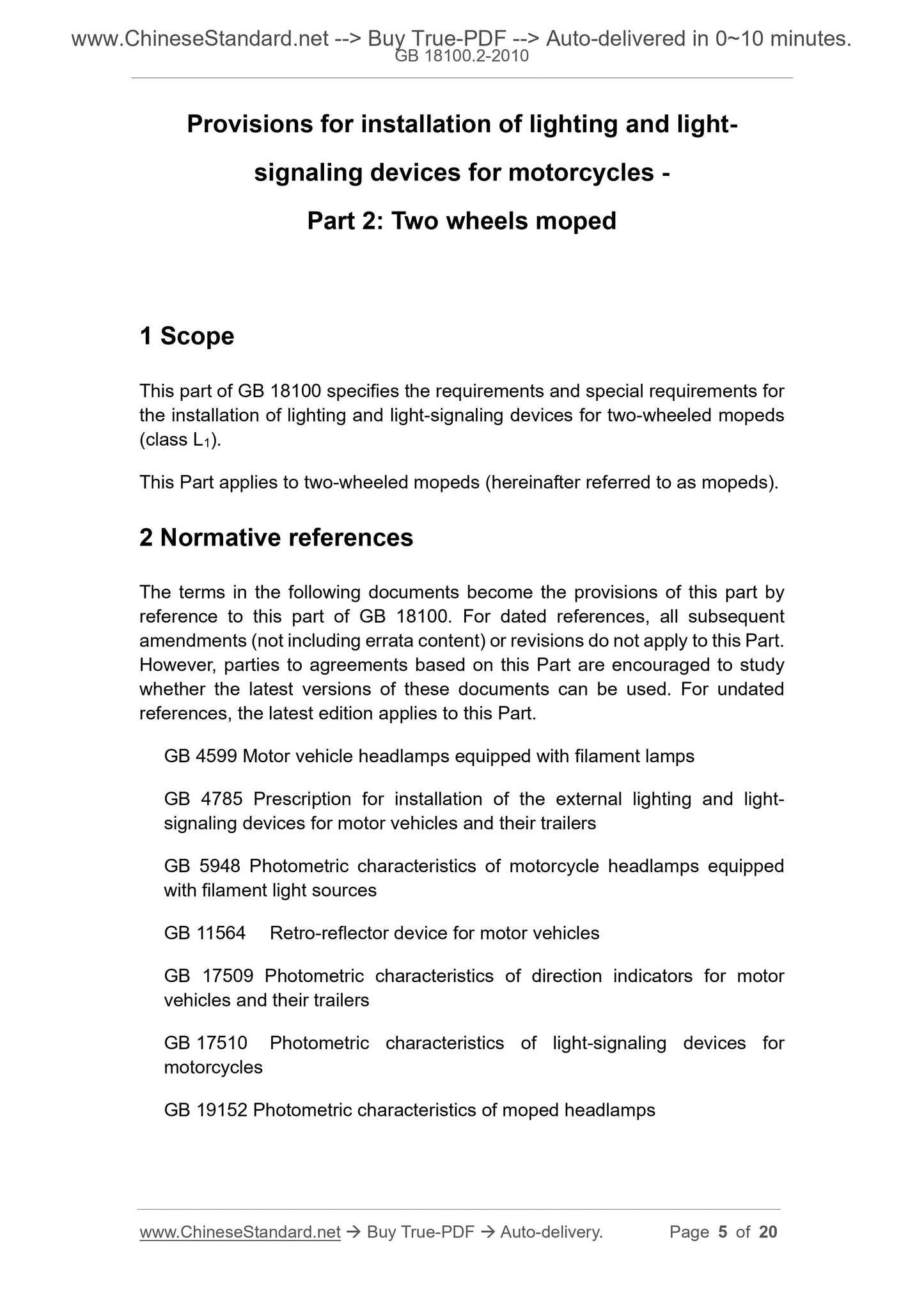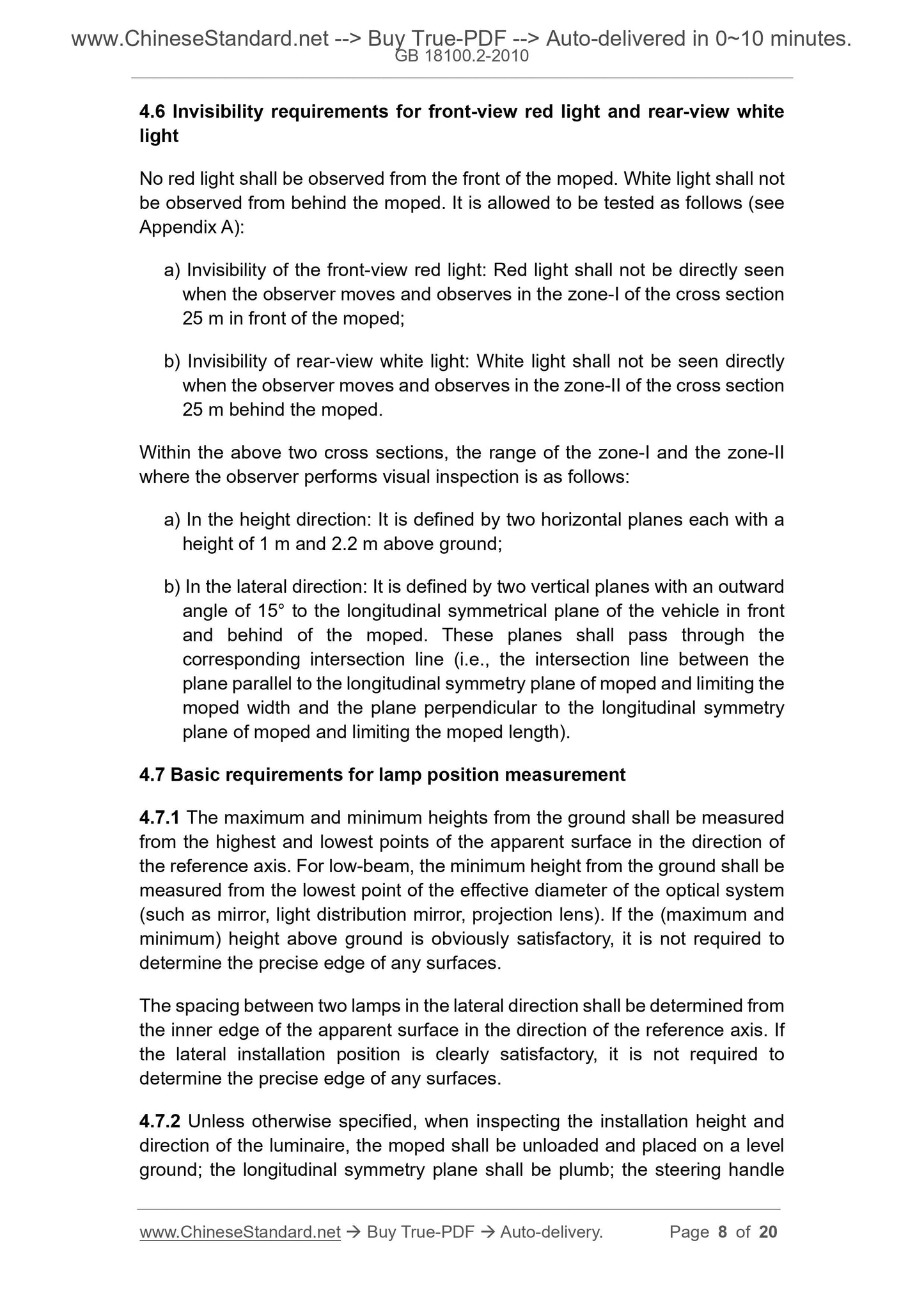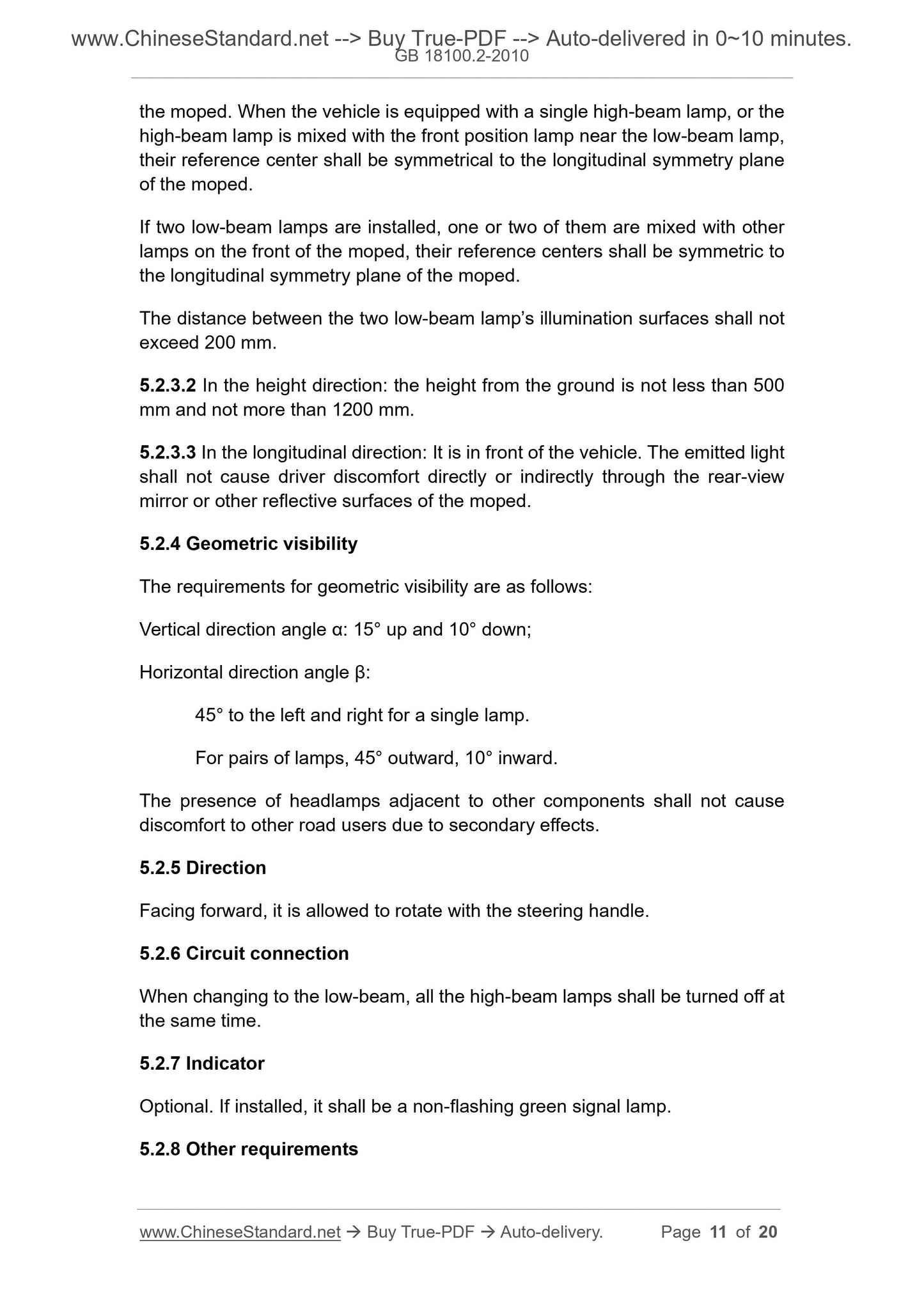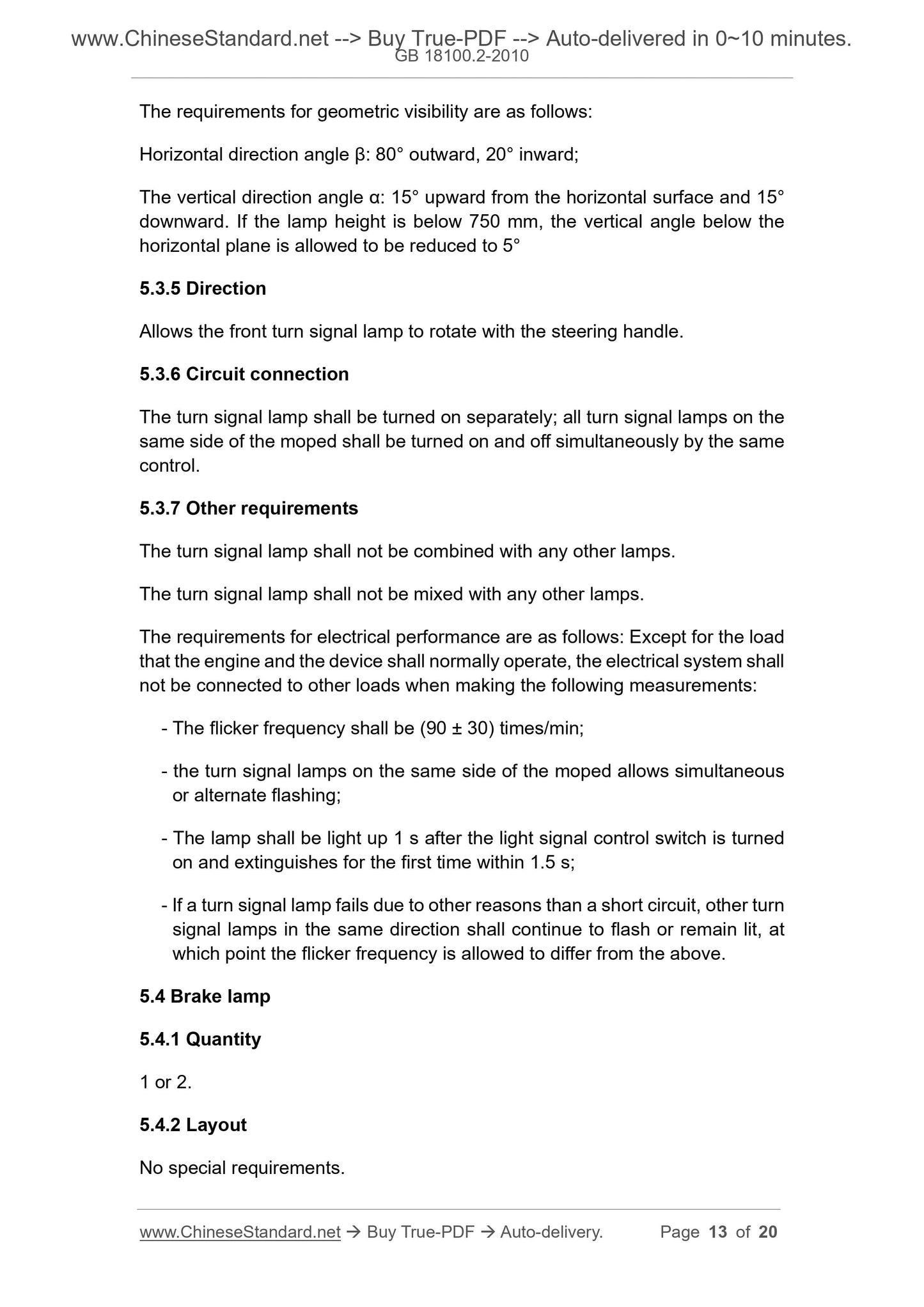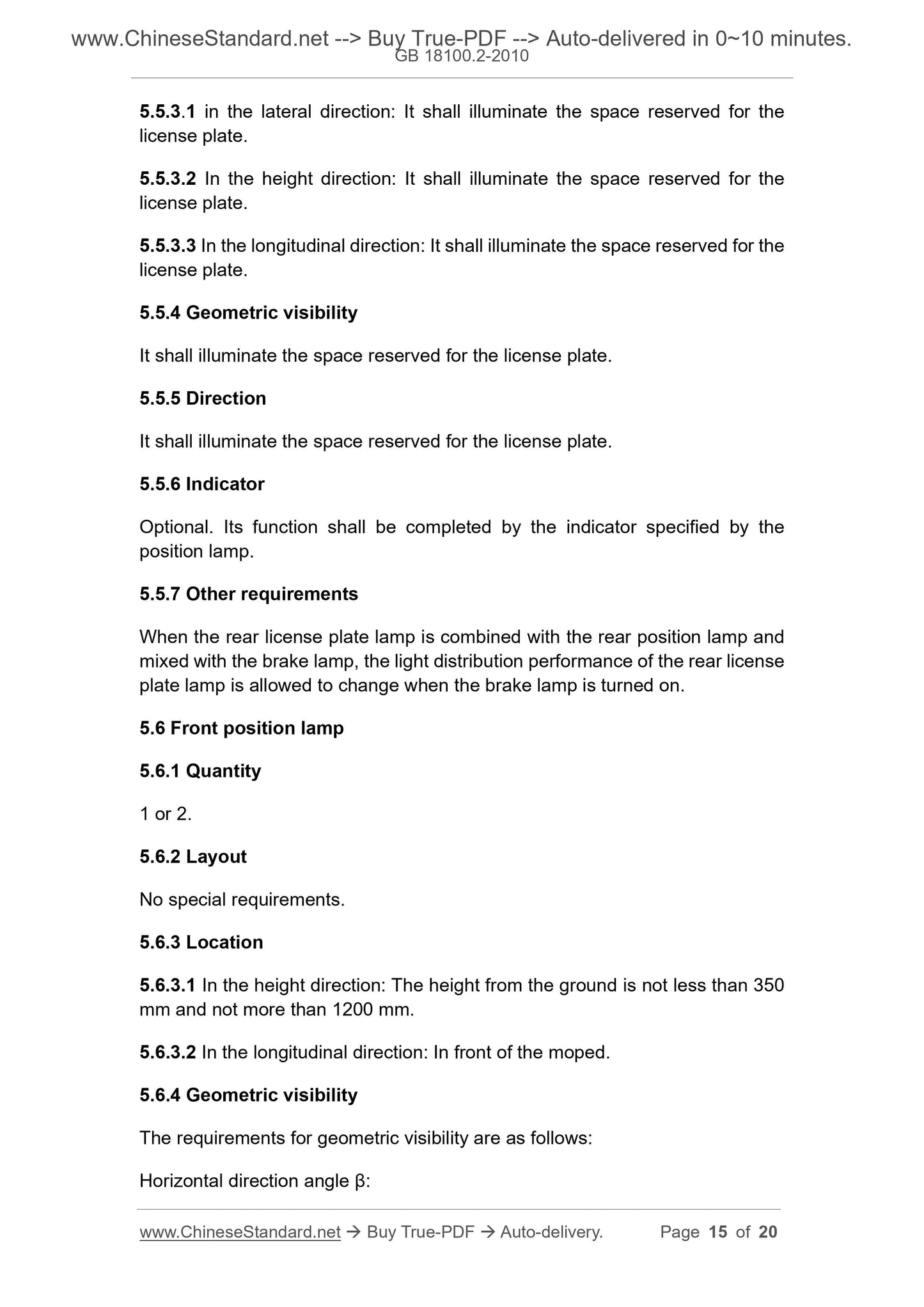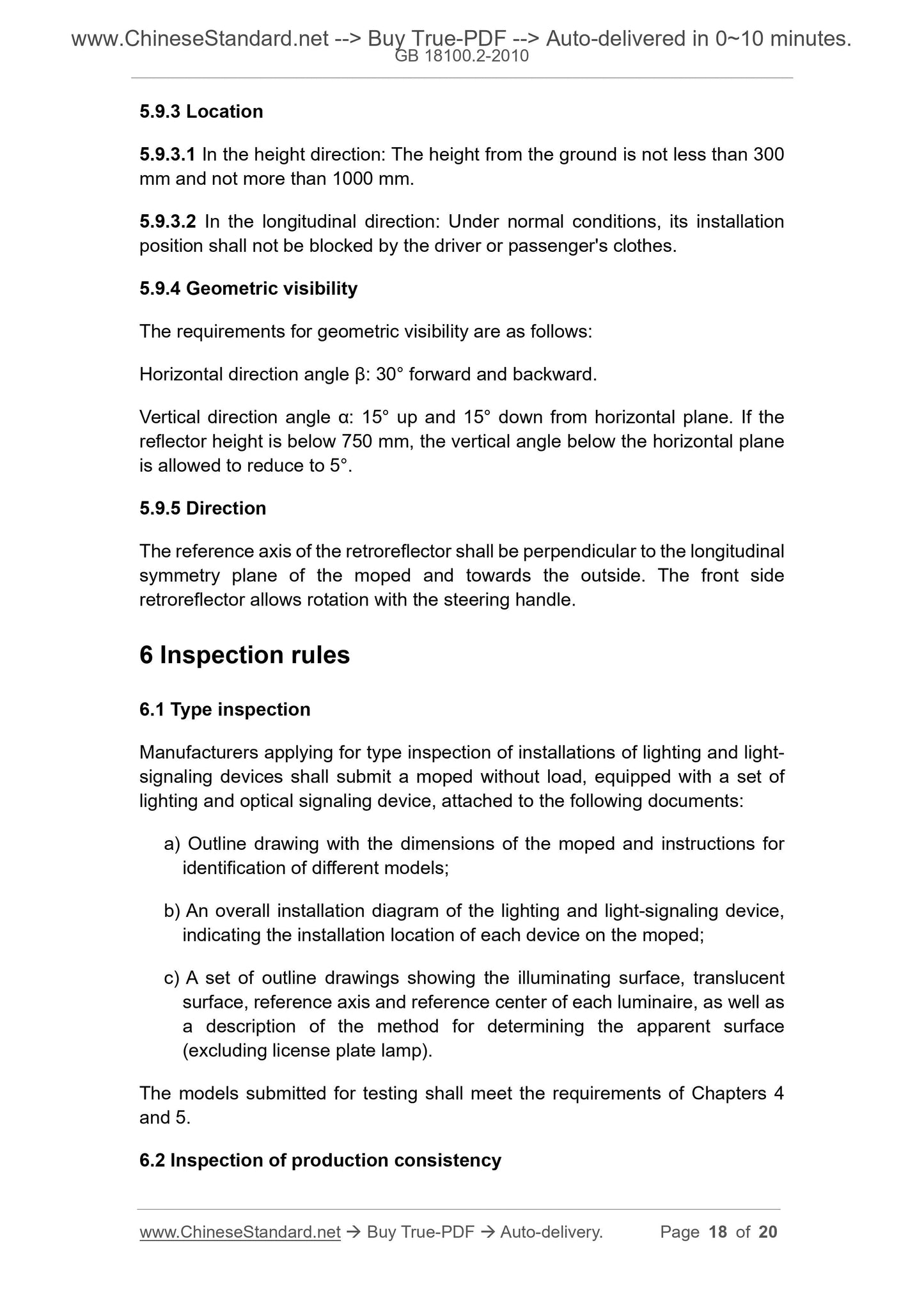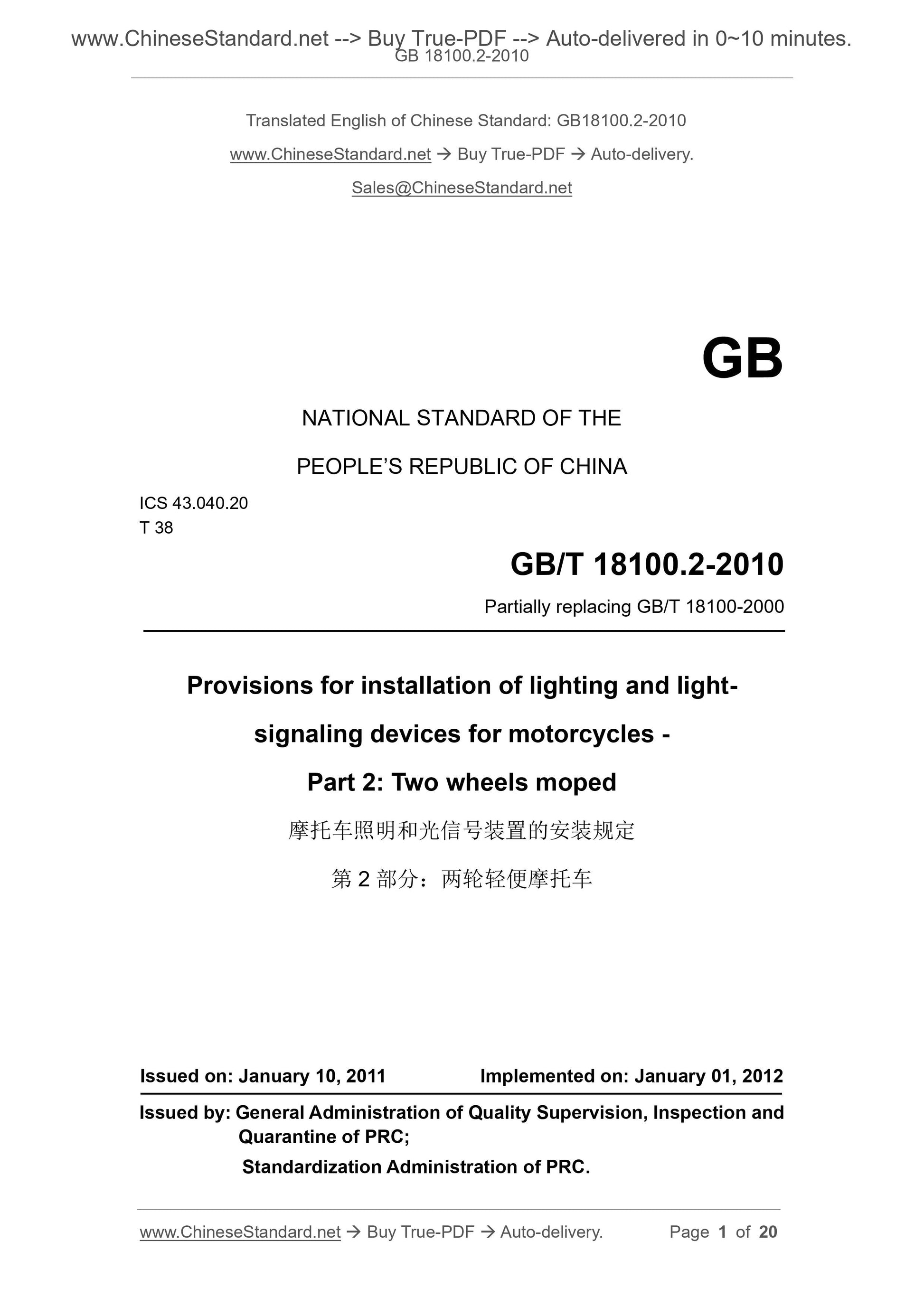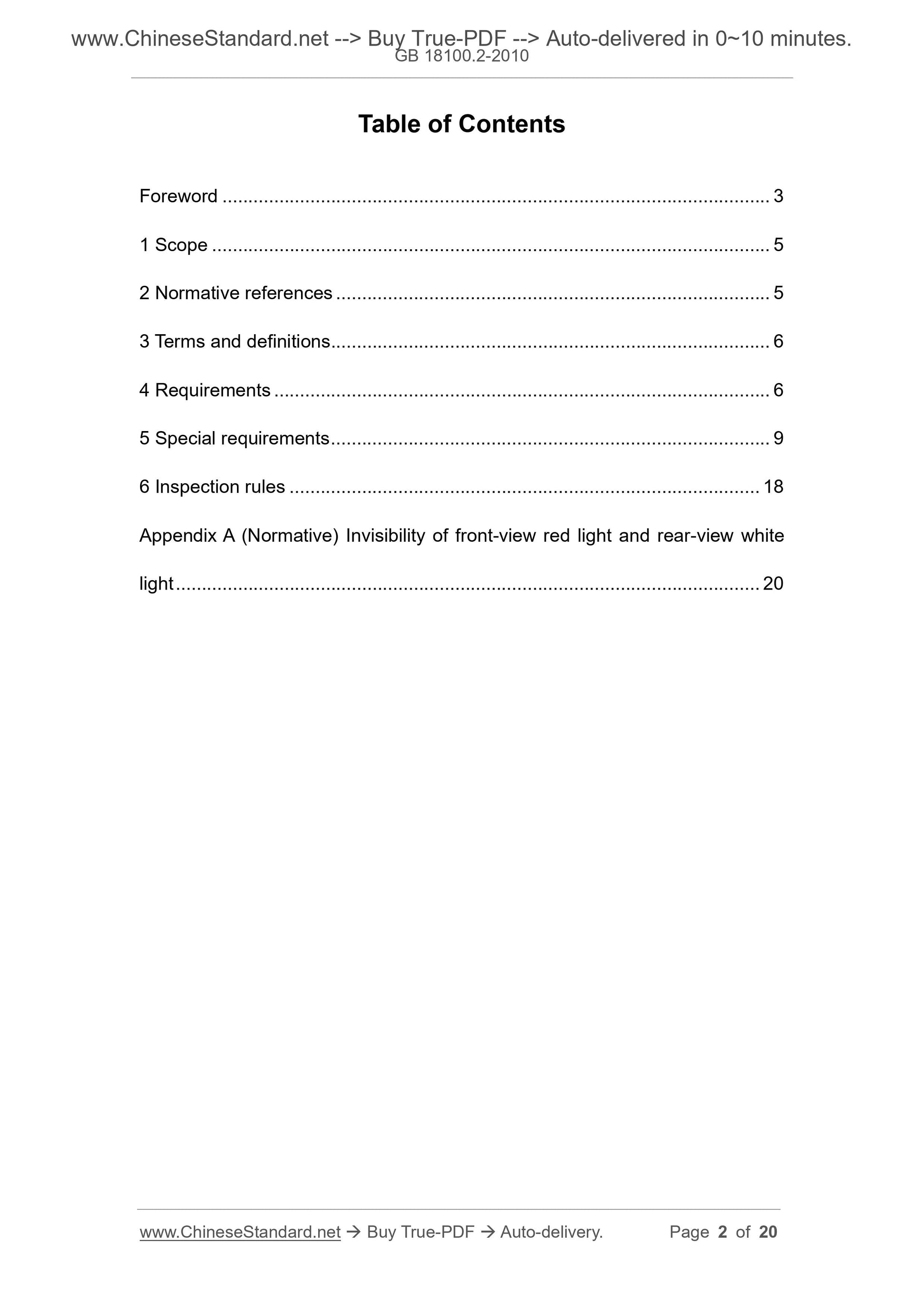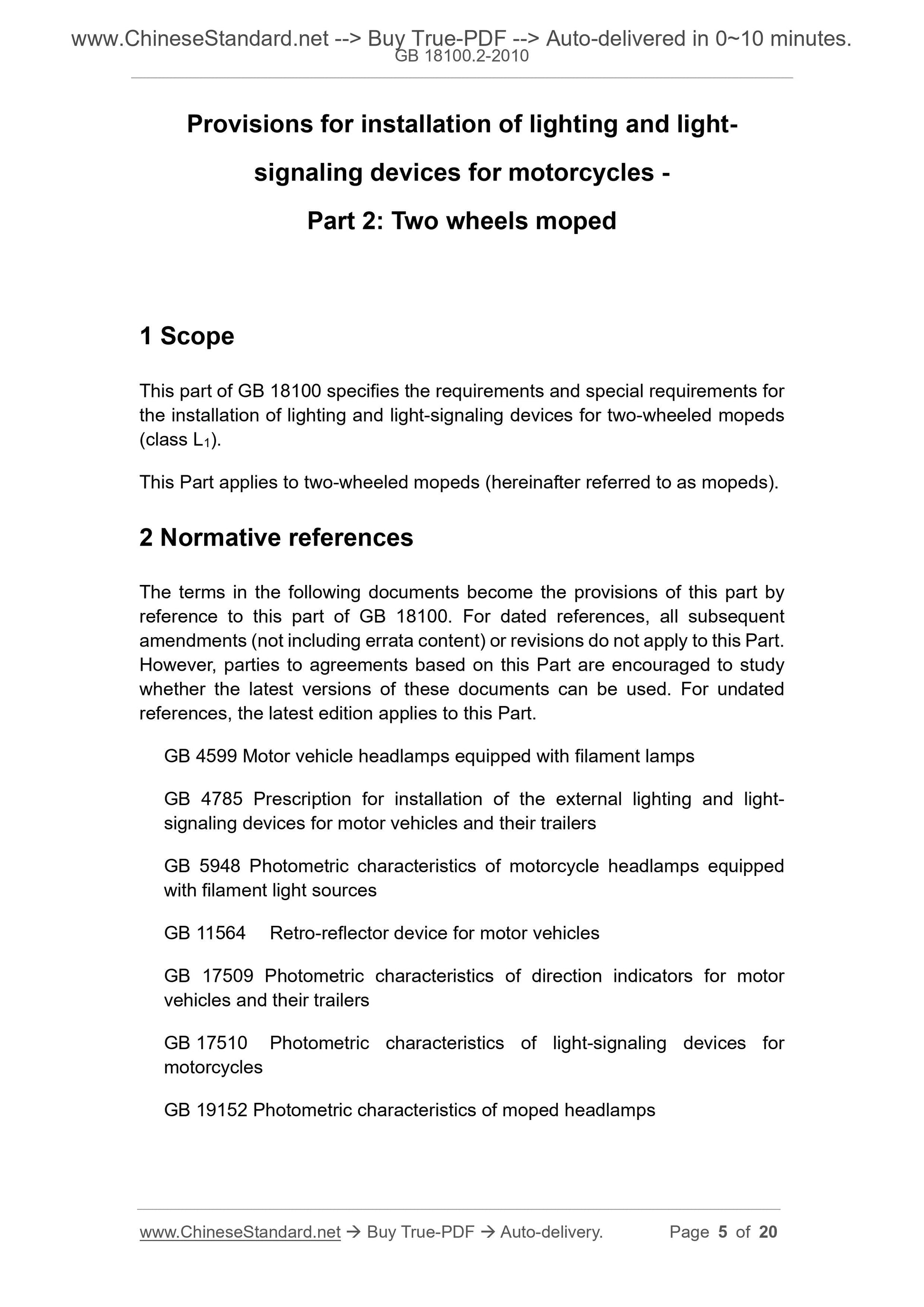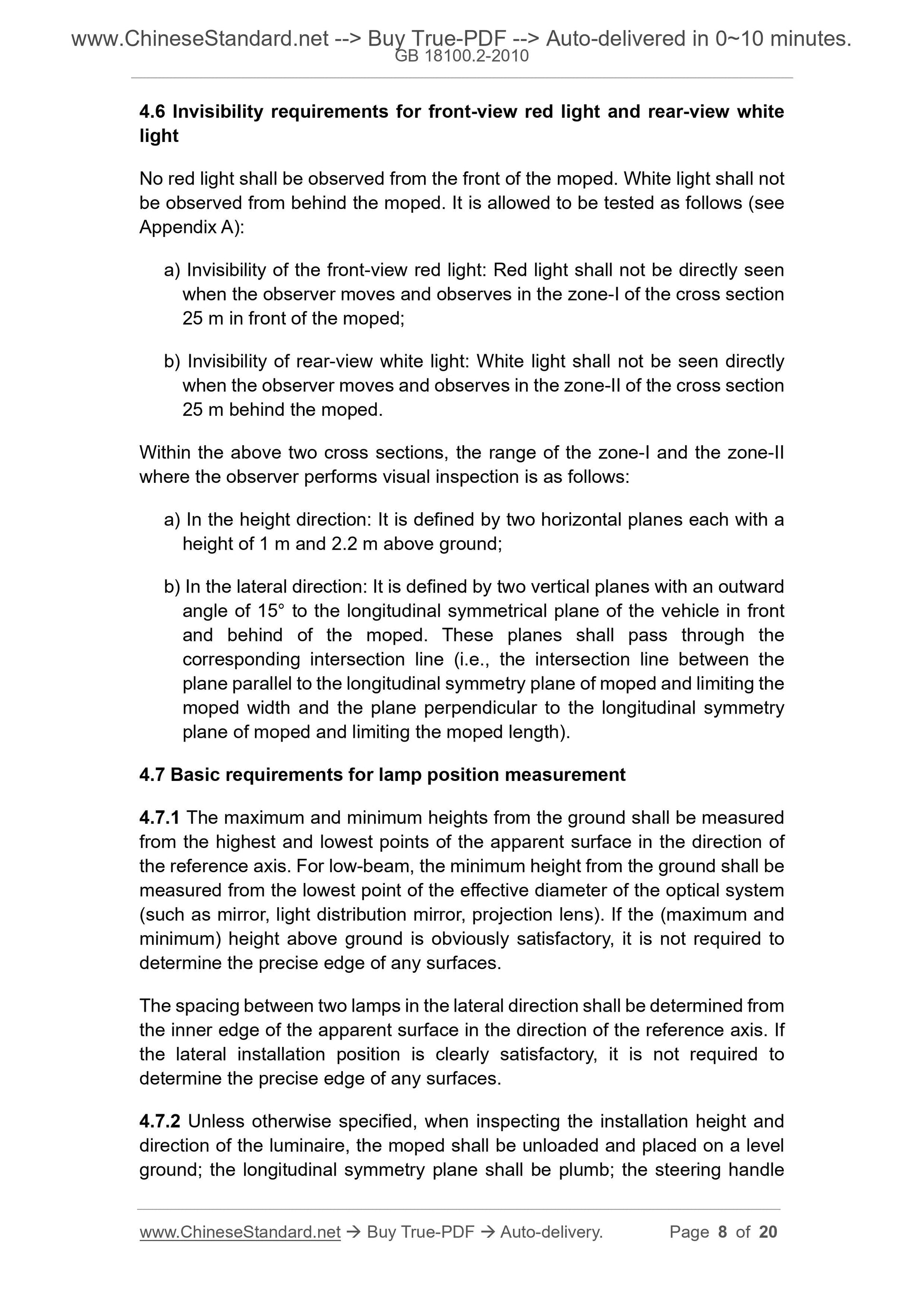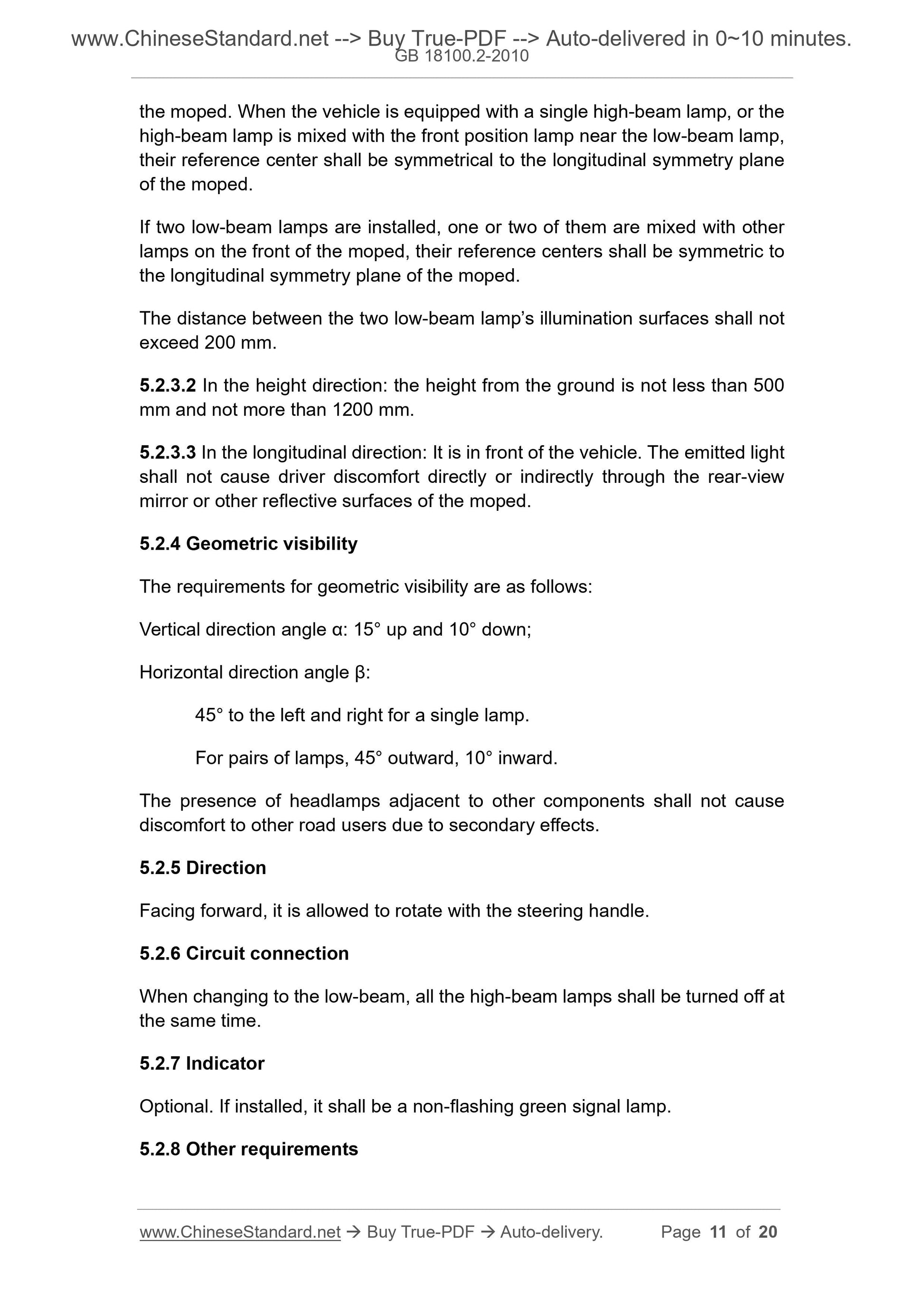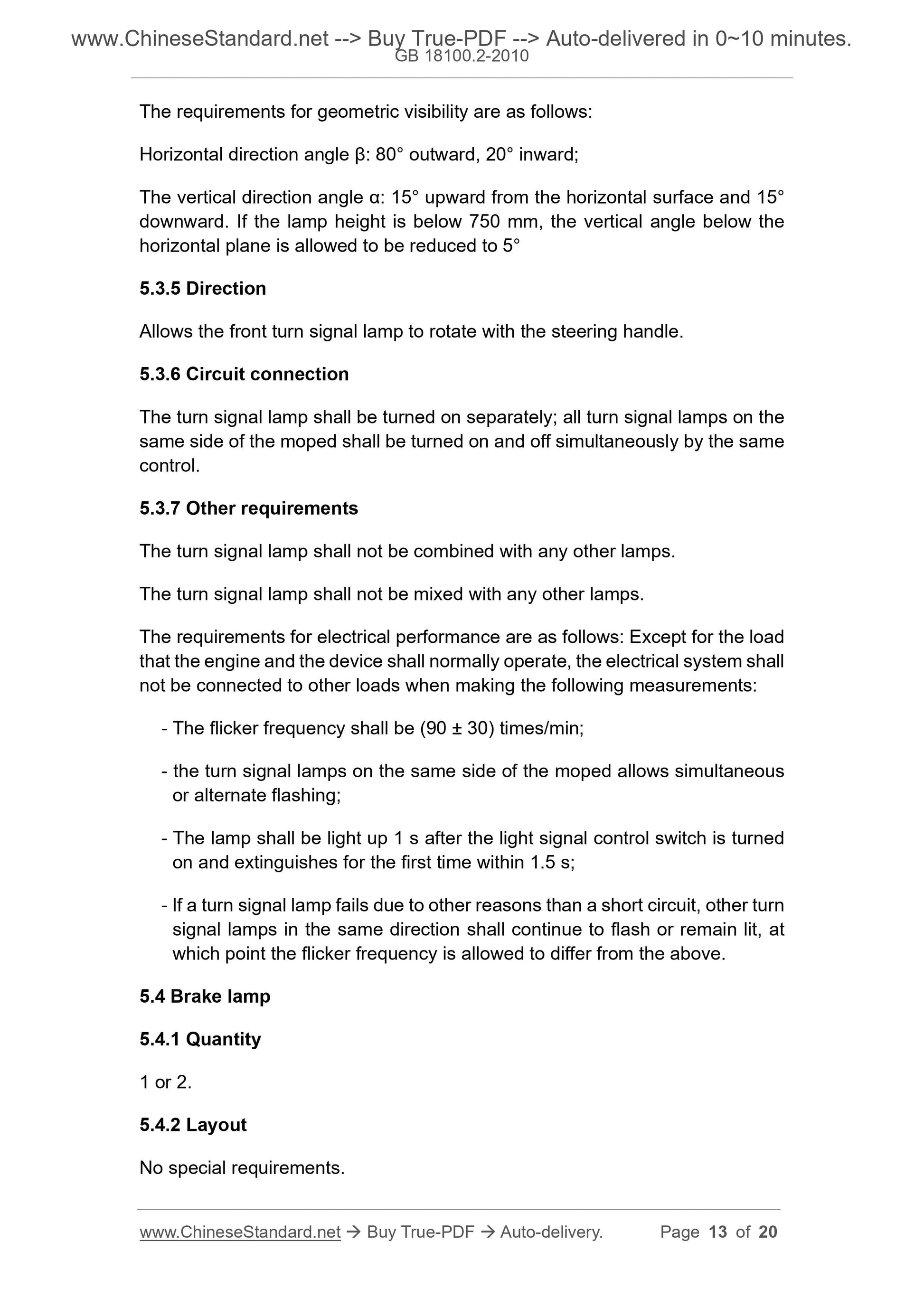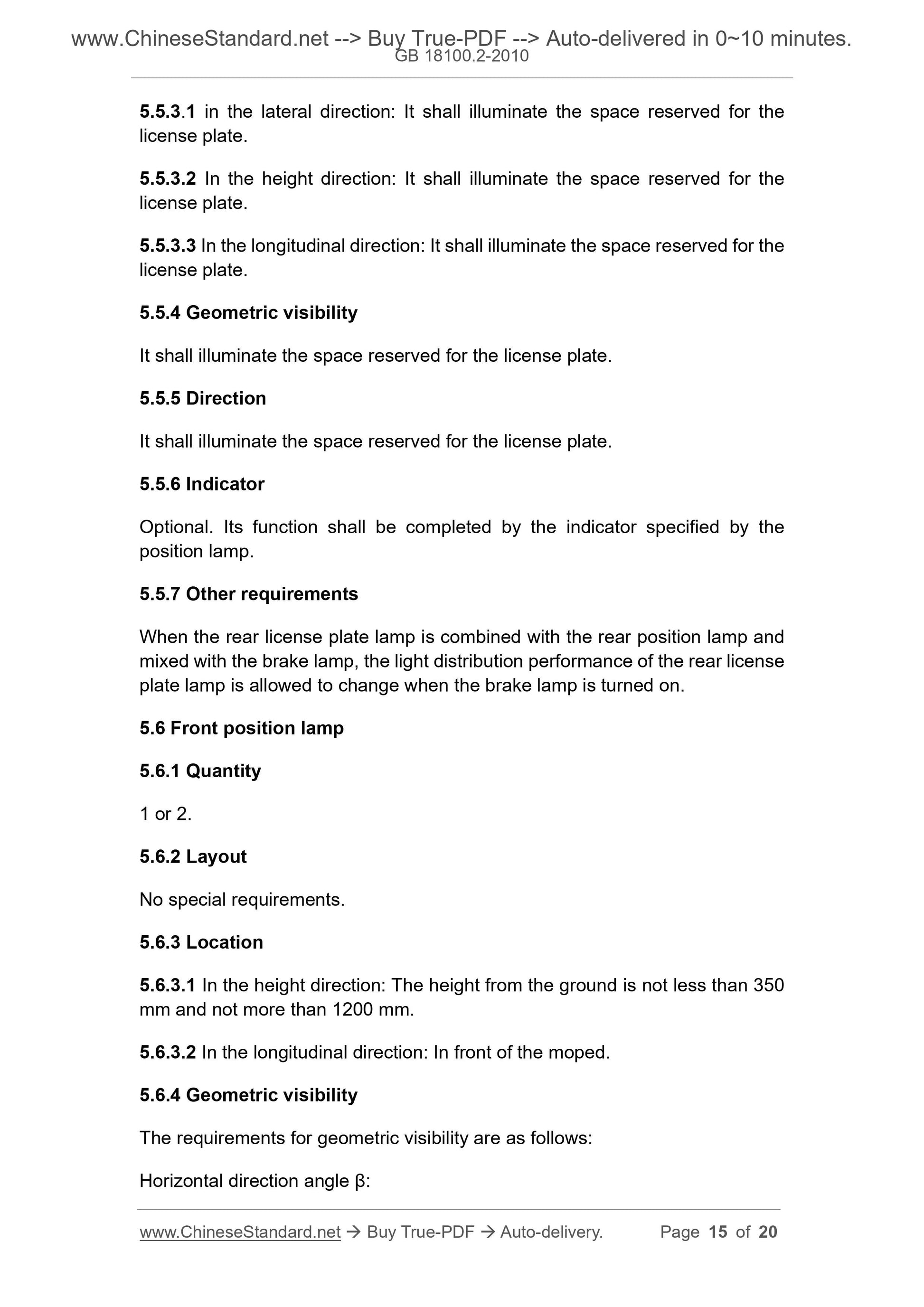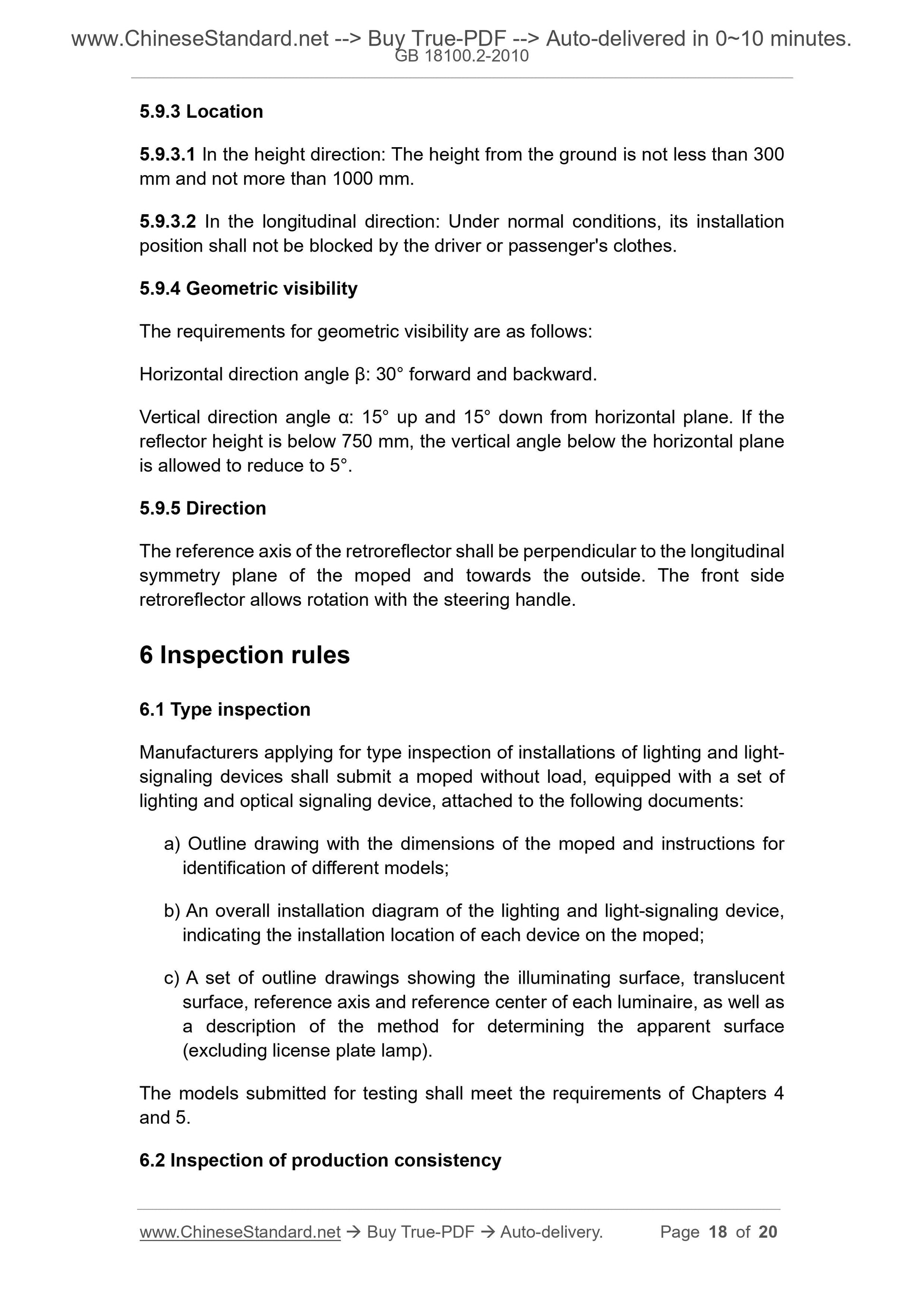1
/
of
8
www.ChineseStandard.us -- Field Test Asia Pte. Ltd.
GB 18100.2-2010 English PDF
GB 18100.2-2010 English PDF
Regular price
$125.00
Regular price
Sale price
$125.00
Unit price
/
per
Shipping calculated at checkout.
Couldn't load pickup availability
GB 18100.2-2010: Provisions for installation of lighting and light-signalling devices for motorcycles -- Part 2: Two wheels moped
Delivery: 9 seconds. Download (and Email) true-PDF + Invoice.Get Quotation: Click GB 18100.2-2010 (Self-service in 1-minute)
Newer / historical versions: GB 18100.2-2010
Preview True-PDF
Scope
This part of GB 18100 specifies the requirements and special requirements forthe installation of lighting and light-signaling devices for two-wheeled mopeds
(class L1).
This Part applies to two-wheeled mopeds (hereinafter referred to as mopeds).
Basic Data
| Standard ID | GB 18100.2-2010 (GB18100.2-2010) |
| Description (Translated English) | Provisions for installation of lighting and light-signalling devices for motorcycles -- Part 2: Two wheels moped |
| Sector / Industry | National Standard |
| Classification of Chinese Standard | T38 |
| Classification of International Standard | 43.040.20 |
| Word Count Estimation | 13,167 |
| Date of Issue | 2011-01-10 |
| Date of Implementation | 2012-01-01 |
| Older Standard (superseded by this standard) | GB 18100-2000 ial |
| Quoted Standard | GB 4599; GB 4785; GB 5948; GB 11564; GB 17509; GB 17510; GB 19152 |
| Adopted Standard | ECER 74-2007, NEQ |
| Regulation (derived from) | Announcement of Newly Approved National Standards No. 1 of 2011 (No. 166 overall) |
| Issuing agency(ies) | General Administration of Quality Supervision, Inspection and Quarantine of the People's Republic of China, Standardization Administration of the People's Republic of China |
| Summary | This Chinese standard applies to two mopeds lighting and light signaling devices installation requirements and special requirements. This standard applies to two mopeds. |
Share
